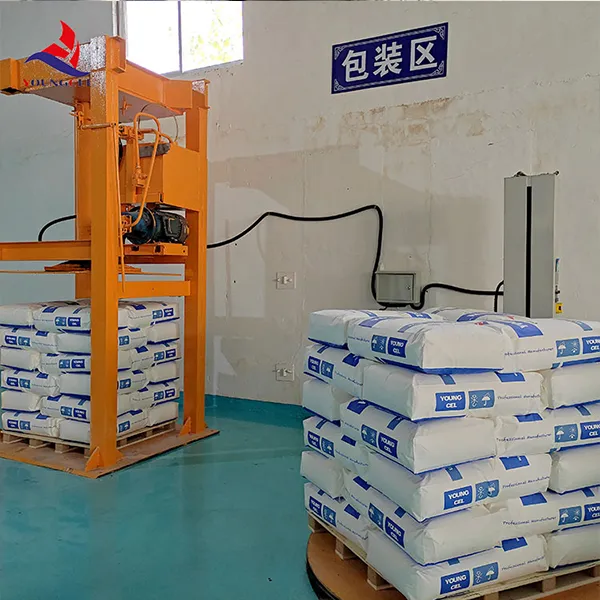The Role of Cellulose and HPMC in Paint Formulations
In the realm of paint formulations, achieving the desired consistency, stability, and performance characteristics is of utmost importance. Among various additives and thickeners utilized in the industry, cellulose derivatives such as Hydroxypropyl Methylcellulose (HPMC) play a pivotal role. This article explores the significance of cellulose and HPMC in paint applications, their benefits, and the impact they have on the overall quality of paint products.
Understanding Cellulose and HPMC
Cellulose is a natural polymer derived primarily from plant cell walls. It is a crucial component in many industries, including textiles, food, and pharmaceuticals, for its remarkable properties. Hydroxypropyl Methylcellulose, a derivative of cellulose, is a non-ionic, water-soluble polymer that has gained popularity in the paint industry for its thickening, binding, and film-forming capabilities.
Benefits of Using HPMC in Paints
1. Thickening Agent One of the primary functions of HPMC in paint formulations is to act as a thickening agent. By increasing the viscosity of the paint mixture, HPMC helps improve the application properties of the paint. This results in better coverage, easier brushability, and reduced sagging during application.
2. Stability Enhancer HPMC aids in stabilizing paint formulations. It prevents the separation of pigment particles from the liquid medium, ensuring a consistent color distribution and improved shelf life. This stability is crucial for both water-based and solvent-based paints, which often face challenges related to settling and phase separation over time.
3. Film-Forming Characteristics The ability of HPMC to form a continuous film upon drying is another significant advantage in paint applications. This film not only enhances the aesthetics of the painted surface but also contributes to the durability and resistance to environmental factors such as moisture and UV light.
cellulose hpmc for paint

4. Water Retention HPMC is known for its excellent water retention properties. In paint formulations, this characteristic is vital as it allows for a longer open time during application, ensuring that the paint remains workable for an extended period. This is particularly beneficial in climates with variable humidity, where quick drying can be a disadvantage.
Environmental Considerations
As sustainability becomes a more pressing concern, the use of natural and biodegradable materials like cellulose in paint formulations aligns with eco-friendly practices. HPMC is non-toxic and has a low environmental impact compared to some synthetic thickeners. Manufacturers are increasingly opting for HPMC to meet consumer demands for environmentally responsible products without compromising performance.
Challenges and Considerations
While HPMC offers numerous benefits, it is essential for manufacturers to consider factors such as the grade of HPMC used, its concentration, and the specific requirements of the paint formulation. Different paint applications—such as interior vs. exterior paints—may require varying properties from HPMC.
Additionally, the interaction of HPMC with other formulation components can impact the overall performance of the paint. It is crucial to conduct thorough testing to achieve the right balance between viscosity, stability, and application properties.
Conclusion
In summary, the incorporation of cellulose derivatives, particularly Hydroxypropyl Methylcellulose, in paint formulations has revolutionized how paints are produced and applied. HPMC not only enhances the physical properties of paint through its thickening and film-forming qualities but also contributes to the overall sustainability profile of the products. As the paint industry continues to innovate, the role of cellulose and HPMC will undoubtedly expand, paving the way for cleaner, more efficient, and high-performing paint alternatives.
-
A Comprehensive Guide to Methyl Ethyl Hydroxyethyl Cellulose: Applications and Industry InsightsNewsNov.24,2025
-
Understanding Methyl 2 Hydroxyethyl Cellulose: Uses, Benefits & Industry InsightsNewsNov.24,2025
-
Hydroxyethyl Methyl Cellulose HEMC: Industrial Uses, Benefits & Future TrendsNewsNov.23,2025
-
HEMC Cellulose: Versatile & Sustainable Industrial Polymer | YoungcelNewsNov.23,2025
-
Methyl Hydroxyethyl Cellulose: Versatile Building Block for Industry & SustainabilityNewsNov.23,2025
-
CAS 9032 42 2: Understanding Polyvinyl Alcohol's Impact on Industry & SustainabilityNewsNov.22,2025




